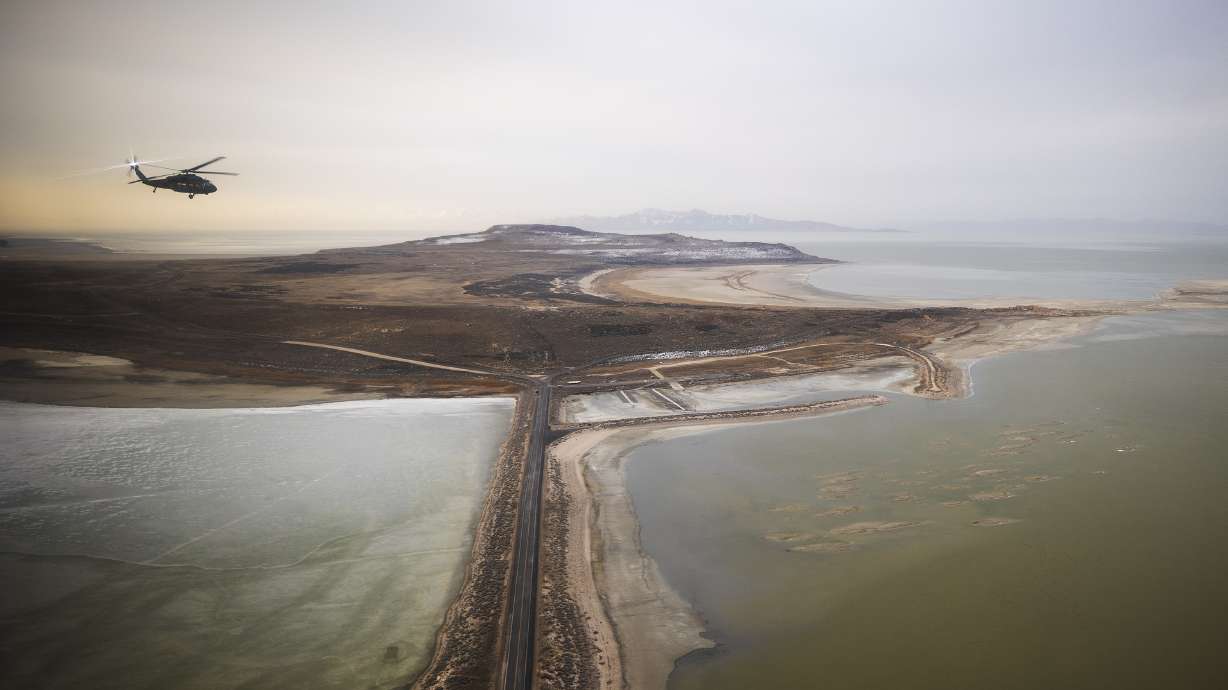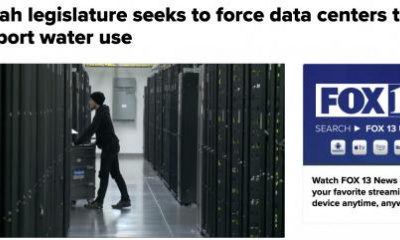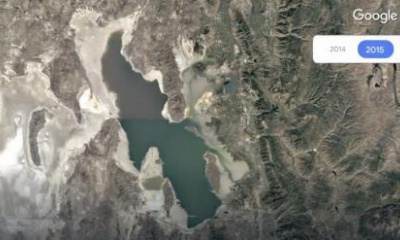SALT LAKE CITY — There are plenty of reasons why Utah politicians are worried about the future of the Great Salt Lake, says Utah Rep. Blake Moore.
"Everything related to the Great Salt Lake is crucial — from the air that we're going to breathe to the dust-minimizing snowpack, industry, waterfowl migration — all that kind of stuff," he said, appearing on KSL NewsRadio's "KSL at Night" Friday.
This is why the U.S. Senate passed a bill co-sponsored by Utah Sen. Mitt Romney last week that allocates $5 million every year for the next five years for the U.S. Geological Survey to study the impacts of the West's drying saline lakes with a special focus on the Great Salt Lake.
Similar action is currently going through the House of Representatives. Moore said that there were some amendments to the House bill, which will require a re-vote in the coming weeks before it's finalized. He believes that will occur, based on conversations with his Washington colleagues.
Moore explained that the studies would coincide with existing work by researchers and the Utah Legislature to handle the shrinking Great Salt Lake.
"It would identify and help validate what some of those ideas are from the state level," he said. "You bring in the USGS to be able to truly dig in, scientifically, and figure out what are the best practices, what is the current situation, what we predict could potentially happen and then sort of solidify all these ideas that (Utah House Speaker Brad Wilson) and Gov. (Spencer) Cox are doing. And it helps almost get them to the best data-driven decision you can get to."
There is a lot already known about the Great Salt Lake, including factors leading to its demise. A 2016 Utah State University study, for instance, found that while drought is one factor for the lake's decline, water diversions within the lake's tributaries — for agricultural, industrial and municipal uses — account for the vast majority of the lake's sudden drop from the 1980s.
Other studies in recent year have helped understand the possible consequences of this decline, including impacts to snowpack, human health and the surrounding ecosystem as the lake has dropped to record-low levels. So what's the value in studying the lake now?
Kevin Perry, a professor of atmospheric science at the University of Utah, says that despite all that's currently known about saline lakes, including the Great Salt Lake, there are still "many, many aspects" that either haven't been studied or aren't fully understood yet. That could very well change in the next five years with the money directed from the federal government.
The money should be enough to bring researchers from all over the country to help piece together a better understanding of saline lake ecosystems.
"This funding will go a long way toward the uncertainties (and) hazards associated with these drying up lakes," he said, on KSL NewsRadio's "Dave & Dujanovic" Monday morning.
One example is the actual human impact of the dust produced by the Great Salt Lake's drying lakebed. His past research has helped identify the existence of arsenic and other hazardous chemicals within the 800 square miles of the currently exposed lakebed; however, he points out that it's still unclear how much of these chemicals Utahns actually inhale during a dust event.
"We don't know if the arsenic poses an actual hazard or not because we don't yet know how often people are exposed to it, what the concentrations are when they breathe it and whether or not it's bioavailable and can get absorbed into your bloodstream," he said. "Those are important research questions that we need to address in order to understand whether or not the lake is posing an actual health hazard."
The research from the federal bills may focus on other less-studied effects or even highlight feasible solutions to help get the lake back to its historic average.
Meanwhile, Perry believes that federal spending toward studies is about the best that Utah could ask for in this situation. He contends that the drying of the Great Salt Lake is a state issue even if it does have potentially far-reaching impacts beyond Utah.
He explains that the amount of money made available is about 20 times larger than what's previously been made available from the state Legislature. But when it comes to action on the Great Salt Lake, Utah will have to act on the information it receives from the available research.
"The real boots-on-the-ground changes," Perry says, "have to happen here at the state level."








